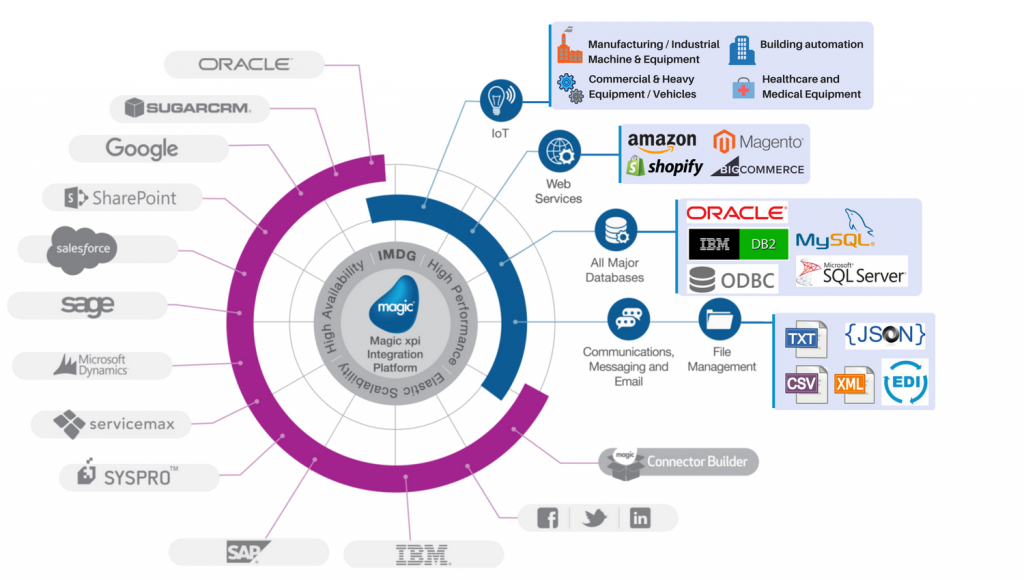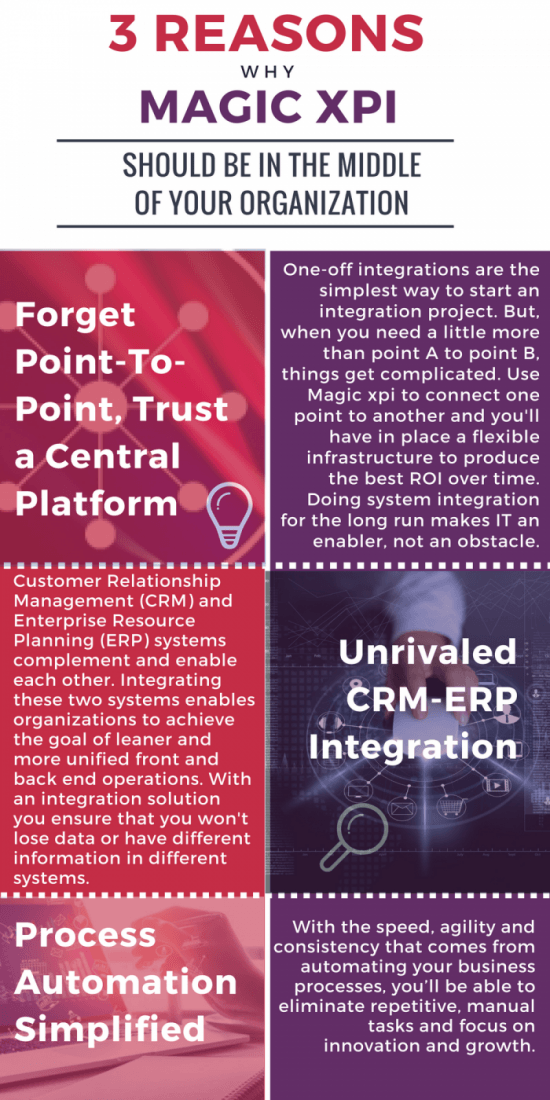This post was updated to reflect current trends and information.
Information Technology is developing at a fast pace. Many experts call IT the fastest growing area of human activity. Systems and applications integration, play an important role in the IT space, and has a significant impact on a company’s performance as well as the entire industrial and commercial sectors. This is why, we have noticed a surge in companies’ interest when it comes to integration…
What is “systems integration”?
According to Wikipedia: “System integration is defined in engineering as the process of bringing together the component sub-systems into one system (an aggregation of subsystems cooperating so that the system is able to deliver the overarching functionality)….”
But, it would be a mistake to consider that “system integration” is only the assembly of hardware and software tools together; the essence of the concept is much broader than that.
“System integration” is an activity to improve the efficiency of an enterprise, the decision-making process and the quality of the information, through an automated process, where “heterogenous” systems can communicate and integrate to each other on a real-time basis.
Most companies in today’s business environment, run lots of “heterogenous” systems and software applications, where each one does not communicate to the other; this kind of environment, creates lots of inefficiencies, poor quality of information, which most of the times results in a reduction of profits, and delays in executive decisions.
Automated “systems integration”, comes into play in creating a “bridge”, where data flows between heterogenous systems, software applications and databases in multiple directions, based on pre-defined business rules, as if the systems are totally “homogenous”
Why companies need “systems integration”?
Companies are increasingly adopting software solutions and equipment to solve specific business needs, therefore adding new “standalone” applications and systems to their software management suite. Most of the times, those software solutions, do not communicate natively to each other.
While adopting a specific software application (either cloud-based or on-premise) might satisfy a business need, and solve a business issue, it will create at the other hand a series of new challenges such as :
- Redundant data entry; most data already exist in another system.
- Need to hire more staff to manage more systems
- Open a door for more human errors when managing new systems.
The above challenges are relevant in any size company, be it small medium or large.
How to solve integration challenges?
To solve integration challenges identified in the previous point, companies should not hesitate to embrace integration projects to synchronize and orchestrate software systems, databases, processes and equipment.
To do so, companies should adopt a capable “integration platform” having the following properties:
- Easy to use, drag and drop
- No coding required
- Quick to learn, develop and deploy
- Easy debugging and simple errors tracking and handling
- Multiple options for triggering and launching processes and flows
- Capable of connecting to most of the databases commonly used in today’s marketplace
- Capable of connecting to the branded software systems (i.e. SAP, Salesforce, Oracle, SugarCRM…) with certified connectors by the manufacturer
- Have built-in generic API driven connectors for IoT projects
- Extensible to go beyond the “out-of-the-box” where you can build your own connectors and drivers for specific proprietary solutions
Benefits of Systems integration
The benefits to implement an API-driven solid integration that is capable of connecting to a wide range of business ecosystems, are valuable. Here are the to 5 benefits
-
Real-Time data synchronization
Having a robust integration platform in charge of orchestrating ad synchronizing data and processes, eliminates the delays in data publication. The data is synchronized between different systems in a real-time basis without the need of any human intervention.
With an automated integration platform, capable of synchronizing data and trigger flows and processes efficiently based on rules and conditions, processing data becomes also real-time, which eliminates the needs of data extraction, transformation and load (ETL). No need for a separate ETL tool.
-
Improvement of employees’ productivity
Data synchronization and orchestration obviously eliminates lots of time and effort for employees to manage and feed/extract data into one system to another. Employees can focus on business related issues, where they can generate more revenues, rather than entering and manipulating data into “heterogenous” systems.
-
Quicker Executive decision making
Having a robust integration platform in place, with all the benefits identified above, company executives will be empowered with the capability to take quick decisions, and avoid the lengthy process of extracting data from different systems, and merging it together in order to build unified data sheet.
-
Increase of profitability
The above benefits put together, will result in a considerable increase of profitability of any company having heterogenous software systems and applications.

What are the signs a company needs an integration platform?
Following are the top signs in any company, that will indicate an integration platform is required in order to improve business processes.
1- You company has multiple software systems that are standalone, with no direct link in between
2- Your company has a mix of on-premise and cloud-based software solutions that are not connected
3- Employees spend considerable time on their day-to-day job, to feed multiple systems
4- Your company has an eCommerce site that is managed separately from the internal ERP system
5- The IT department at the company is not capable of delivering reports and analytics on-time
6- Unable to respond to business requirements from your clients, to deliver within 48 hours
7- Data is in great mismatch between systems and solutions, due to its redundancy
8- Lots of employees are working on building reports and data entry work
9- No visibility of company’s equipment data and performance (i.e. production machines, cameras, field service data…)
Looking for an integration platform solution for your business?
For over 20 years now, our company has been an official partner of Magic Software Enterprises Ltd. a global enterprise software company, delivering Magic xpi, a fully reliable SOA, API-driven integration platform for all connectivity needs. Magic xpi Business Integration Platform delivers enterprise-grade integration, business process automation, and data synchronization solutions, with comprehensive security and proven reliability. Implementing a wide range of certified and optimized connectors and adaptors, Magic xpi integrates leading ERP, CRM, finance, and other enterprise systems, such as SAP, Oracle, Salesforce, Microsoft, IBM, Google, and many more.
Looking for Integration Solutions? Contact Us Today





